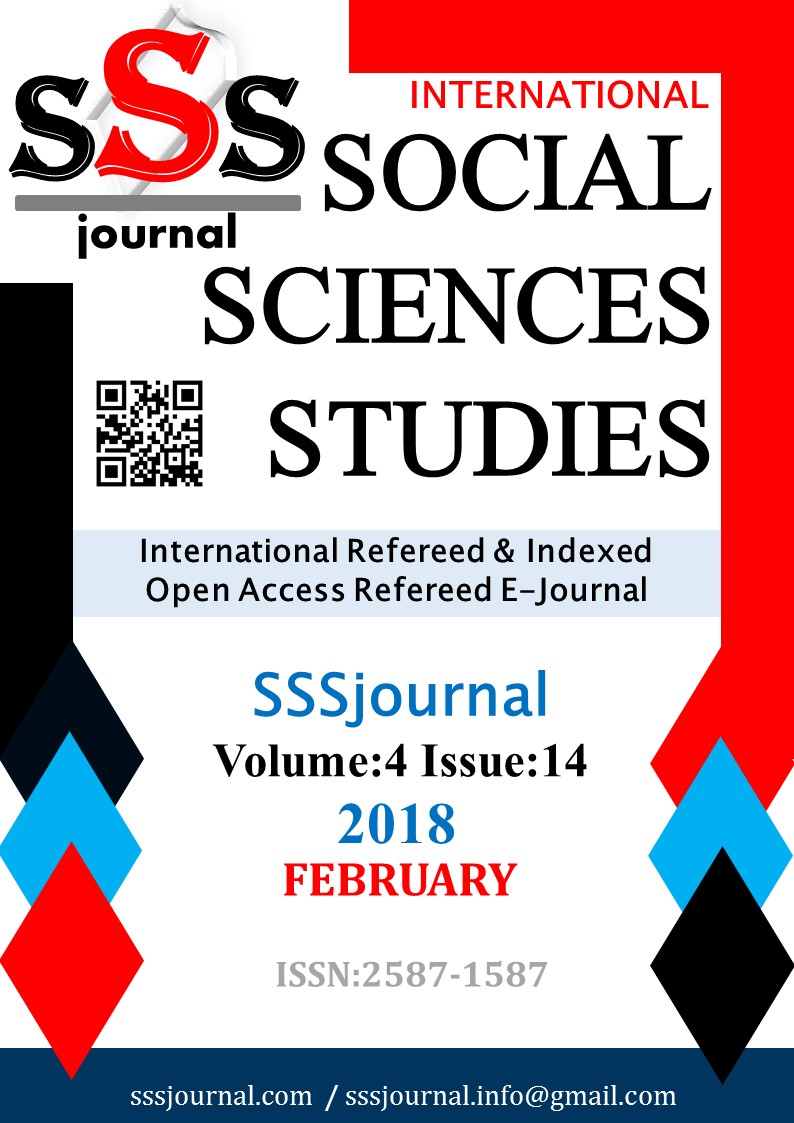Author :
Abstract
Latince "innovare" kökünden gelen inovasyon “yenilik, yenileme, ilerleme, gelişme ve değişik bir iş yapma” anlamlarında kullanmaktadırlar. İnavosyon süreci işletmeler tarafından mevcut ürün ve hizmeti farklı ve değişik fikirlerle geliştirmek ve uygulamak olduğundan icatla karıştırılmamalıdır. Turizm sektörü açısından da inovasyon daha önce bilinen ürün ve hizmetin katma değer yaratılarak yeni bir şekilde ve önemli ölçüde değiştirilip pazara sunulmasıdır. Tabiidir ki burada işletmenin yeni yatırım yapması ve bütçe ayırması da gerekmektedir. Turizm destinasyon yönetimine göre inovasyon devletler için öncelikli bir konu olmaktadır. Bu durumda başarıyla çalışan bir sistemin kurulmasını ve etkin politikaların tasarlanıp uygulanmasını gerektirir. İnovasyonda sistem yaklaşımı, hem bilginin üretilmesi, hem de yayılarak uygulama süreçlerini kapsadığından politikanın odağı, kamunun turizm kurum ve işletmeleriyle etkili iletişime geçmesine dayanır. “Ulusal İnovasyon Sistemi”nin hayata geçirilmesi ve geliştirilmesi için kamunun özel sektör kuruluşlarıyla, seyahat acentaları ve tur operatörleri dâhil ortaklaşa bir çalışma içine girmesi uygun olacaktır. Seyahat işletmeleri konuya sadece kendi açılarından değil aynı zamanda sektörel, bölgesel ve ulusal açılardan bakmalıdırlar. İnovasyon fikri geliştirilmeli ve turizm endüstrisinde kullanılmak üzere ticarileştirilmelidir. Turizm işletmelerinde yapılan tüm yenilikçi çalışmalar, hedeflerin tayini, stratejiler, verilen emek, yapılan yatırımlar sonuçta işletmeye maddi bir getiri sağlamazsa hedef tayininde bir yanlışlık var demektir. Yani yenilikçilik ve yaratıcılık ticari ustalıkla birleştirilmelidir. Bu çalışmada literatür taraması yapılarak ikincil verilerden ve sektörel uygulamalardan yararlanılarak konu incelenmiştir.
Keywords
Abstract
Innovation derives from the Latin word "innovare" meaning innovate, renewal, progress, development and doing something different. For the companies innovation process is to develop and implement the existing products and services with different and innovative ideas and should not be confused with the invention. In terms of the tourism sector, innovation is one of the priority activities by creating added values and adding new and substantial changes of products and services introducing to the tourism market. Of course, for the organisations it is also necessary for new investment and budget allocation. On the other hand, in terms of tourism destination management, innovation should be regarded as a top priority for States. This requires the establishment of a successful system and the design and implementation of effective policies. Since the system approach in innovation involves the processes of producing and spreading information, the focus of the policy is based on effective communication with the tourism agencies and enterprises of the concerned country. It is essential for the public to work in partnership with private sector organizations including travel agencies and tour operators in order to pass on and develop “The National Innovation System". Travel operators should also look at the issue not only from their own aspect, but as well as sectorial, regional and national perspectives. The idea of innovation should be developed and commercialized for use in the tourism industry. In travel industry all the innovative work, the determination of the objectives, the strategies, the labor force, the investments should result in financial gain. No financial gain would indicate that there is a mistake in the determination of the target. So, innovation and creativity must be combined with commercial expertise. In this study literature was examined by using secondary data and sectoral applications.
Keywords
- Blake, A., Sinclair, M. And Soria, J. (2006), Tourism Productivity: Evidence from the UK Annals of
- Blake, A., Sinclair, M. And Soria, J. (2006), Tourism Productivity: Evidence from the UK Annals of Tourism Research, 33 (4): 1099-1120.
- Buhalis, D. (1998) “Strategic use of information technology in the tourism industry”, Tourism Management, 19, 409-421.
- Dess, G., Lumpkin, G, and Taylor, M.L., (2005), Strategic Management, McGraw-Hill, New York
- Goodstein, L.D., Nolan, T.M. and Pheiffer, J.W. (1992) Applied Strategic Planning-a Comprehensive Guide. Pheiffer and Company, San Diego, California.
- Hirsrich, R.D. and Peters, M.P. (1992), Entrepreneurship-Starting, Developing and Managing a New Enterprise, Second Edition. Homewood, Irwin: IL.
- Hjalager, A. (2002), “Repairing innovation defectiveness in tourism”, Tourism Management, 23 (4): 464-74. Hjalager, ag.e. p. 465.
- Luiz Moutinho (2010), Strategic Management in Tourism, CABI Tourism Texts, 2nd Edition, UK. Luiz Moutinho (2011), Strategic Management in Tourism, Cabi.Org, UK.
- Morrison, A., Rimmington, M. And Williams, C. (1999), Entrepreneurship in the Hospitality Tourism and Leisure Industries. Oxford: Butterworth-Heinemann.
- OECD (2006), Innovation and Growth in Tourism. Paris: OECD.
- Page, S.J., Forer, P. And Lawton, G.R. (1999), Small business development and tourism: Terra incognita Tourism Management, 20, 435-59.
- Peters, M. And Pikkmaat, B. (2005), Innovation in tourism, in M. Peters and B. Pikkmaat (eds) Innovation in Hospitality and Tourism, Binghampton, NJ: The Haworth Hospitality Press
- Schumpeter, J. (1952), Can Capitalism Survive? New York: Harper & Row.
- Schumpeter, J., (1961) The Theory of Economic Development, Oxford University Press, New York.
- Shaw, G. And Williams, A. (2004), From lifestyle consumption to lifestyle production: Changing patterns oftourism consumption, R. Thomas (ed.) Small Firms in Tourism: International Prespectives, Oxford: Elsevier.Stephen J. Page & Joanne Connell, Tourism A Modern Synsthesis, South Western Cengage Learning, Third Edition, UK, 2009, p. 296.
- Stephen J. Page & Joanne Connell (2009). Tourism A Modern Synsthesis, South Western Cengage Learning, Third Edition, UK.
- Sundbo, J., Orfilas-Sintes, F. And Sorensen, F. (2007), The innovative behaviour of tourism firms- comperative studies of Denmark and Spain, Research Policy, 36 (1): 88-106.
- Thomas, R. And Augustyn, M. (eds) (2006) Tourism in the New Europe. Oxford: Elsevier
- Wan, D., Ong, C. And Lee, F. (2005), “Determinants of firm innovation in Singapore”, Technovation, 25 (3): 261-8.





